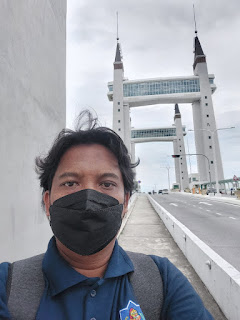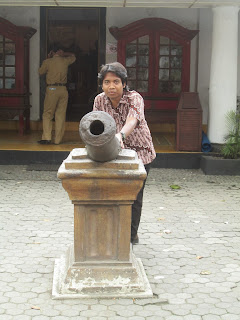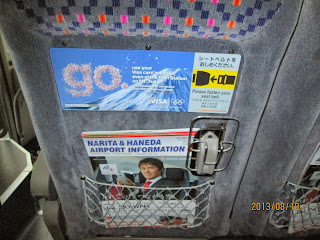Introduction
The kelp forest are most important component of ecosystem of temperate and polar rocky shores. They ensure high productivity, biodiversity, healthy ecological condition of marine biota and the constitute habitat and breeding ground for a large diversity of marine life forms (Klochkova et al, 2012)
 The kelp create a marine "forest" that provide a habitat for diversity of marine organisms. These brown algae are also commercially valuable foods and sources for alginates and are used in medicine (Lee, 1989 in Yoon et al. 2001)
The kelp create a marine "forest" that provide a habitat for diversity of marine organisms. These brown algae are also commercially valuable foods and sources for alginates and are used in medicine (Lee, 1989 in Yoon et al. 2001)
Evolution and Biogeography
The biogeography is the study of the geographic distribution of organisms throughout the landscape examines the how geographical variation in the biotic component that inhabit in the area (Klappenbach, 2012).
The evolution is change over time. under this broad definition, evolution can refer to variety of changes that occur over time the uplifting of mountains, the erosion of riverbeds, or creation of new species. The term biological evolution is a more specific type of evolution (Klappenbach, 2012).
What's Kelp ?
The term "kelp" refer to marine algae belonging to taxonomic order Laminariales (Phylum : Heterokontophyta) . The most widely recognized species are giant kelps (Macrocystis sp), although there numerous other genera such as Laminaria, Ecklonia, Lessonia, Alaria, and Eisenia. Several species of the kelp namely :
Specific feature of kelp :
The large bodies are made up of 3 part :

- Blade or the leaf like extension are deciduous (annual)
- Stipe or stem may contain an enlarged air bladder pneumatocysts from flotation blades.
- Holdfast is a root like mass of tissue.
Where does kelp grow ?
The kelp can grow on :

- The rocky shores
- in area with abundant nutrients
- Moderate water motion, cool, clear, and salty water
- Ideal temperature are 5 up to 20 celcius degree
Evolution theory of kelp :
According to Yoon et al (2001) :
The phylogeny tree of kelp the following is :
Source : (Yoon et al. 2001)
 The most recent contructed phylogenic tree has shown that Macrocystis, Laminaria, Nereocystis and others is part of group of closely related taxa (see tree at the right). Using ribosomal data, Druehl et al (1997), concluded that the moleculer tree doesn't agree with the current classification of kelp. this has led to realization that kelp are very recently evolved group and proper classification need further investigation.
The most recent contructed phylogenic tree has shown that Macrocystis, Laminaria, Nereocystis and others is part of group of closely related taxa (see tree at the right). Using ribosomal data, Druehl et al (1997), concluded that the moleculer tree doesn't agree with the current classification of kelp. this has led to realization that kelp are very recently evolved group and proper classification need further investigation.
The very enlighting article by Estes and Steinberg (1988) present a model of kelp evolution which leads them suggest :
- That kelp had a North Pasific origin
- That radiated extensively within the North Pasific during the Late Cenozoid
- That the evolved in environment in which intensity of herbivory was low because of the limiting predatory influences of mammals that consumed kelp eating sea urchin
According to Bolton (2010), the biogeographical evidence suggests three main lines of subsequent evolution :
- A diversification producing the four "derived" families Alariaceae, Laminariaceae, Costariceae and Lessoniaceae and most extant genera in the temperate Northern Pasific, probably during the Miocene.
- The evolution of an Arctic Flora which invaded the North Atlantic following the opening of the Bering Strait ca. 5.5 Mya.
- At least four separate crossing by different genera, of tropical regions from Northern To Southern Hemisphere.
When is the kelp appear ?
 The kelp are thought to have appeared in the miocene epoch, 23 to 6 Mya. By the Miocene the drake 's passage opened up between Antartica and South America, as had the passage between Tasmania and Antartica, making way for a circumpolar current of cold water.
The kelp are thought to have appeared in the miocene epoch, 23 to 6 Mya. By the Miocene the drake 's passage opened up between Antartica and South America, as had the passage between Tasmania and Antartica, making way for a circumpolar current of cold water.
Fossil laminarialean brown algae (Julescraneia grandicornia)
 There is finding of laminarian fossil in Los Angeles which is this species calcareous at the Miocene epoch
There is finding of laminarian fossil in Los Angeles which is this species calcareous at the Miocene epoch
There are many other fossil of brown algae the following is :
 These brown algae fossils were found in the Monterey Formation California
These brown algae fossils were found in the Monterey Formation California
Source : (Parker and Dawson, 1965)
Distribution of the kelp
 According to Luning (1990) that the order Laminariales diverse spread in the North Pasific, but only a few species that can reach the North Atlantic that they have family ties in both continent. This evidence suggests that in the North Pasific is a richer source of cold climate.
According to Luning (1990) that the order Laminariales diverse spread in the North Pasific, but only a few species that can reach the North Atlantic that they have family ties in both continent. This evidence suggests that in the North Pasific is a richer source of cold climate.
Distribution of Laminaria digitata
The center of origin of the kelp
References Cites :
Bold,
S. dan M.J. Wynne. 1985. Introduction
to the Algae. Prentice Hall Inc. Englewood Clift. J. J. New Jersey. USA.
Bolton,
J. J. 2010. The
biogeography of kelps (Laminariales, Phaeophyceae): a global analysis with new insights from recent
advances in molecular phylogenetics. Helgol.Mar.Res. 64:263-279. Downloaded at
http://rd.springer.com.
Climateincontext. blogspot.com.,
2008. The
Evolutionary History of the Earth.
Downloaded
at
http://climateincontext. blogspot.com. Dated 28 November 2012.
Digplanet.com.,
2012. Kelp Forest. Downloaded at http://www.digplanet.com/wiki/Kelp_forest.
Downing,
D., 1988. Kelp Evolution : a comment.
Howard University. Washington DC.
Druehl, L. D., Mayes, C., Tan, I.
H., and Saunders, G. W. 1997. Molecular and morphological phylogenies of kelp and associated brown
algae. In “Origins
of Algae and their Plastids” (D.
Bhattacharya, Ed.), pp. 221–235. Springer-Verlag, Wien.
Luning, K., 1990. Seaweeds
; Their Environment, Biogeography, and Ecophysiology.
Biologische Anstalt Helgoland Hamburg. Federal Republic of
Germany.
M.D.
Guiry in Guiry, M.D. & Guiry, G.M. 2012. AlgaeBase.
World-wide electronic publication,
National University of Ireland, Galway. http://www.algaebase.org
Mcdanil, 2012. Large algae.
Downloaded at http://www.mcdanil.edu/biology/99both/higheralgae/largealga emainhtm. Dated 16 November 2012.
Klochkova et
al,
2012. Morphology
and Phytogeography
of Laminaria appressirhiza and L. inclinatorhiza (Phaeophyceae)
from the Sea of Okhotsk. Downloaded at http://dx.doi.org/10.4490/algae.2012.27.3.139. Dated 15 November 2012.
Yoon, H.S et al, 2001. Phylogeny of Alariaceae, Laminariaceae, and Lessoniaceae
(Phaeophyceae) Based on Plastid-Encoded RuBisCo
Spacer and Nuclear-Encoded ITS Sequence
Comparisons. Department
of Biology, Chungnam National University, Daejon 305-764, Korea and †Department of
Biological Sciences,
University of Iowa. Downloaded
at http://springer.com/journal/10152.
Dated 15 November 2012.
Klappenbach, L, 2012. Biogeography.
Downloaded at about.com. Dated 14 November 2012.
Parker,
B and Dawson,
Y.E. 1965. Monterey
Formation : Macroalgae.
Downloaded at http://www.ucmp.berkeley.edu/greenalgae/greenalgae.htm Date : 14 November 2012.

























































